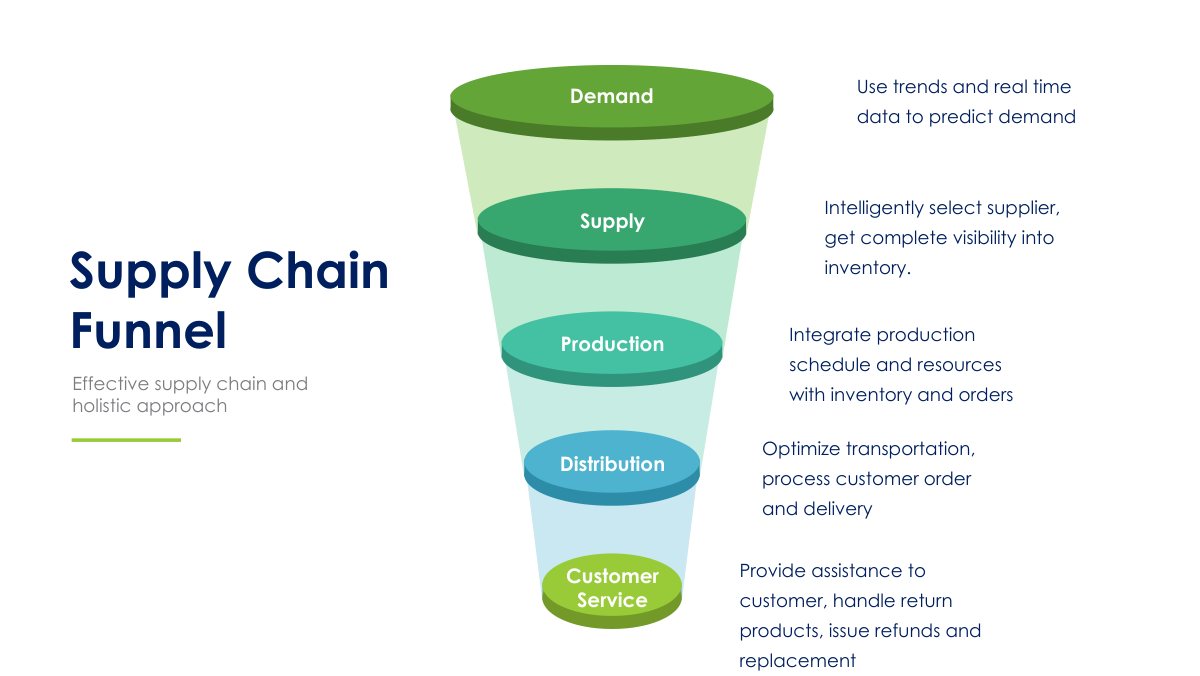AI-Powered Supply Chain Funnel Explained

|
Here's a detailed article on AI use cases across the supply chain funnel organized by functional stages — Demand, Supply, Product, Distribution, Customer Service, and Other Strategic/Operational Enhancements — with examples across Retail, Manufacturing, Food & Beverage, Healthcare, and Electronics industries. How AI is Powering Supply Chain Innovation Across the FunnelArtificial Intelligence is fundamentally reshaping the way supply chains operate across industries. By infusing intelligence into each stage of the funnel—from demand prediction to post-sale service—businesses are reducing costs, improving service levels, and becoming more resilient. Let’s explore how AI is applied across the supply chain funnel, with specific use cases in Retail, Manufacturing, Food & Beverage (F/&B), Healthcare, and Electronics industries. 1. Demand ForecastingAI Value: Accurately predicting what customers will buy, when, and in what quantities. Use Cases:
2. Supply PlanningAI Value: Balancing sourcing, procurement, and capacity planning to meet demand. Use Cases:
3. Product Management & QualityAI Value: Enhancing product lifecycle management, from manufacturing to packaging quality. Use Cases:
4. Distribution & LogisticsAI Value: Optimizing the movement of goods across the supply chain. Use Cases:
5. Customer Service & Reverse LogisticsAI Value: Supporting customers post-sale and efficiently managing returns. Use Cases:
6. Other Strategic AI Enhancementsa) Sustainability Optimization
b) Resilience and Risk Management
c) Digital Twin Integration
ConclusionAI in the supply chain is no longer limited to forecasting or automation—it is a strategic enabler across the entire value chain. From predicting consumer needs to reducing environmental impact, AI is making supply chains more agile, intelligent, and resilient across every industry. Businesses that successfully embed AI across their supply chain funnel can unlock significant cost savings, service improvements, and competitive advantage. |
||||
|
||||